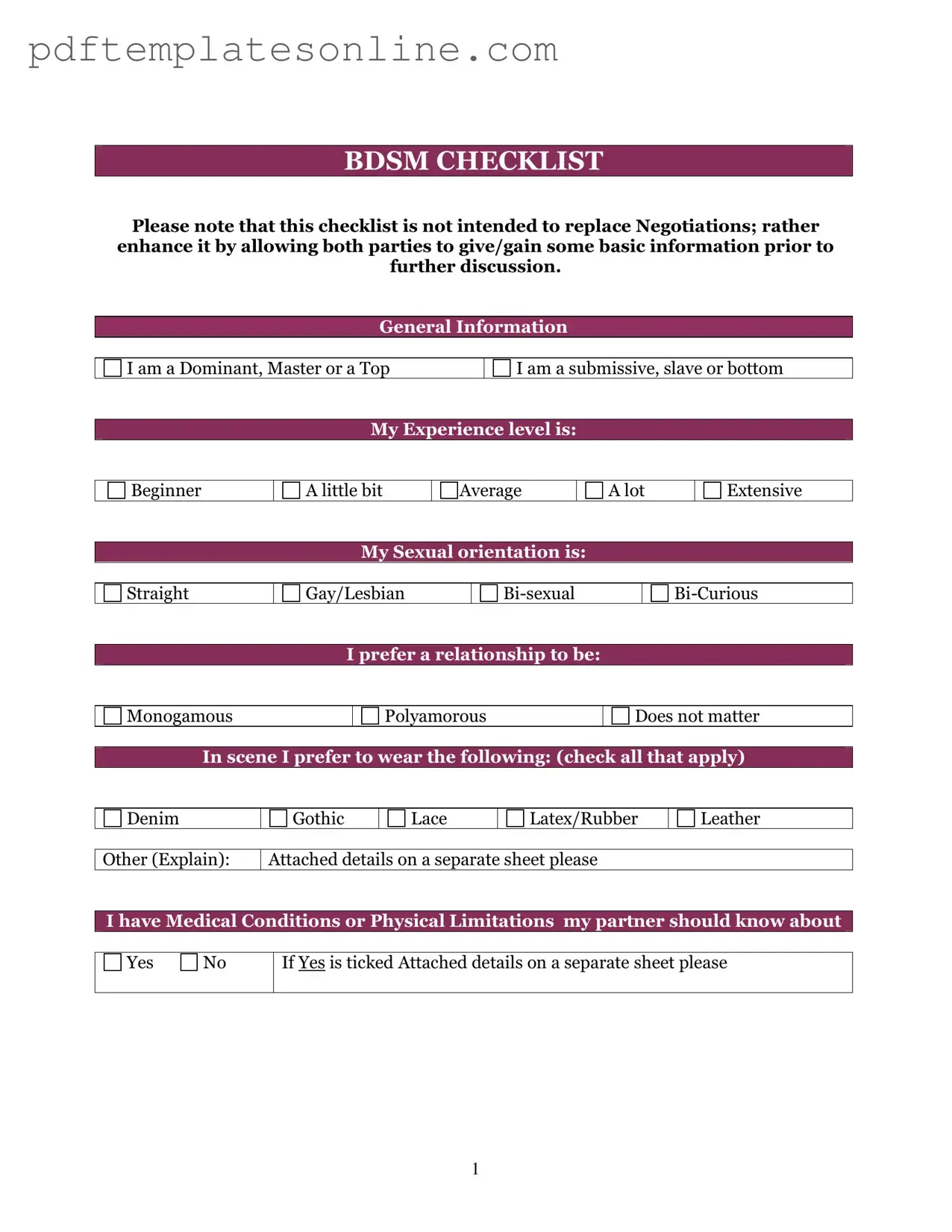Filling out the BDSM Checklist form can be a crucial step in establishing clear communication and consent between partners. However, individuals often make several common mistakes that can lead to misunderstandings or complications. Recognizing these errors can enhance the experience and ensure a safer environment.
One significant mistake is failing to read the entire checklist before filling it out. Many people rush through the form, assuming they know what they want or what their partner wants. This can result in missed opportunities for exploration or, conversely, an agreement to activities that one party is uncomfortable with.
Another common error is not being honest about preferences. Individuals might feel pressure to conform to perceived norms or expectations within the BDSM community. This can lead to overestimating their comfort levels with certain activities, which may create issues later on.
Additionally, neglecting to discuss the checklist with a partner can be detrimental. Open dialogue is essential for mutual understanding and consent. Filling out the form in isolation can result in discrepancies between what each person expects, leading to confusion or conflict.
Some people also fail to update their checklist over time. Preferences and boundaries can evolve, and it is important to revisit the checklist regularly. Sticking to an outdated version may prevent partners from engaging in new experiences that could enhance their relationship.
Another mistake involves not specifying limits clearly. When individuals fill out the checklist, vague language can lead to misinterpretation. Clear and specific terms help ensure that both partners understand each other’s boundaries and desires.
Many also overlook the importance of including safe words on the checklist. Safe words are critical for ensuring that all parties feel secure during activities. Omitting this detail can lead to misunderstandings about when to stop or pause an activity.
Moreover, ignoring aftercare preferences is a frequent oversight. Aftercare is an essential aspect of BDSM that helps partners reconnect and process their experiences. Not addressing this in the checklist can leave one or both partners feeling neglected or unsupported.
Lastly, using the checklist as a one-time formality rather than an ongoing conversation can be problematic. BDSM dynamics often require continual negotiation and communication. Treating the checklist as a static document rather than a living agreement can undermine the relationship's foundation.
